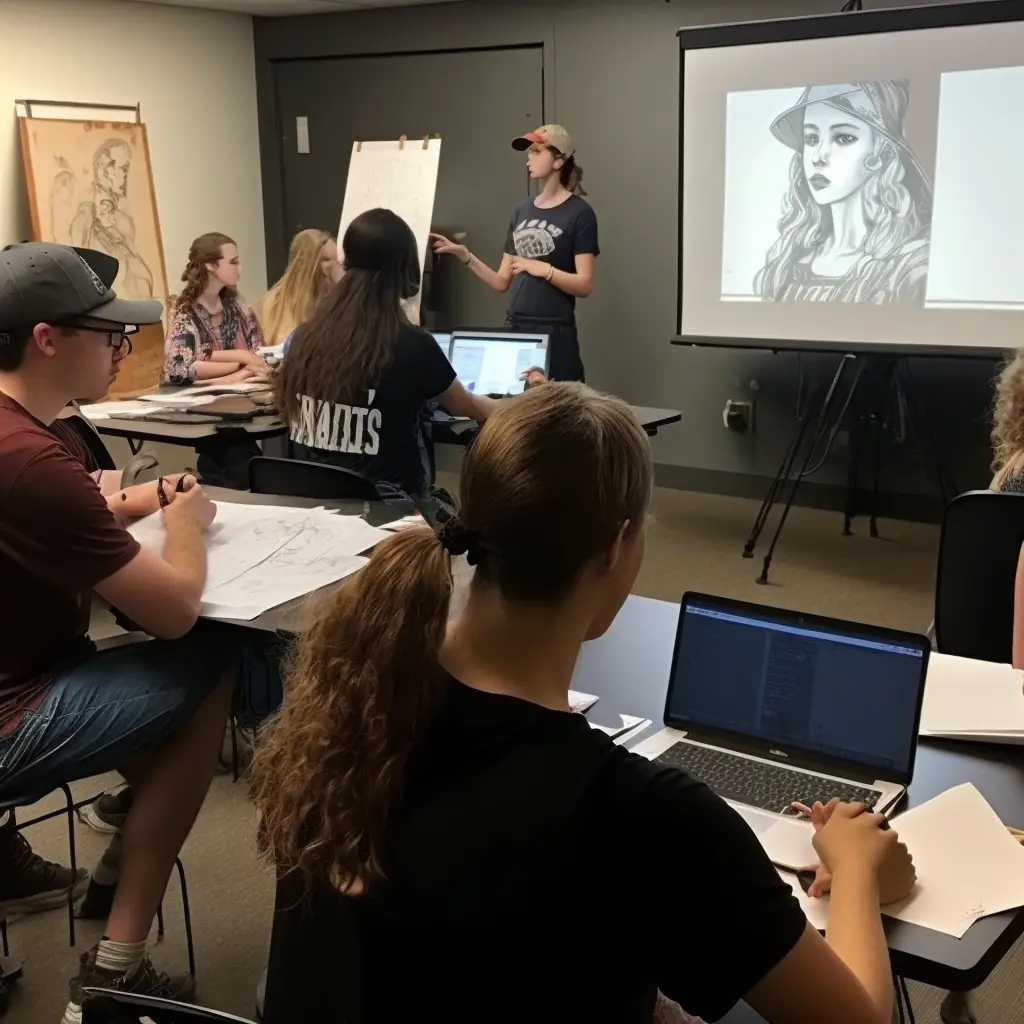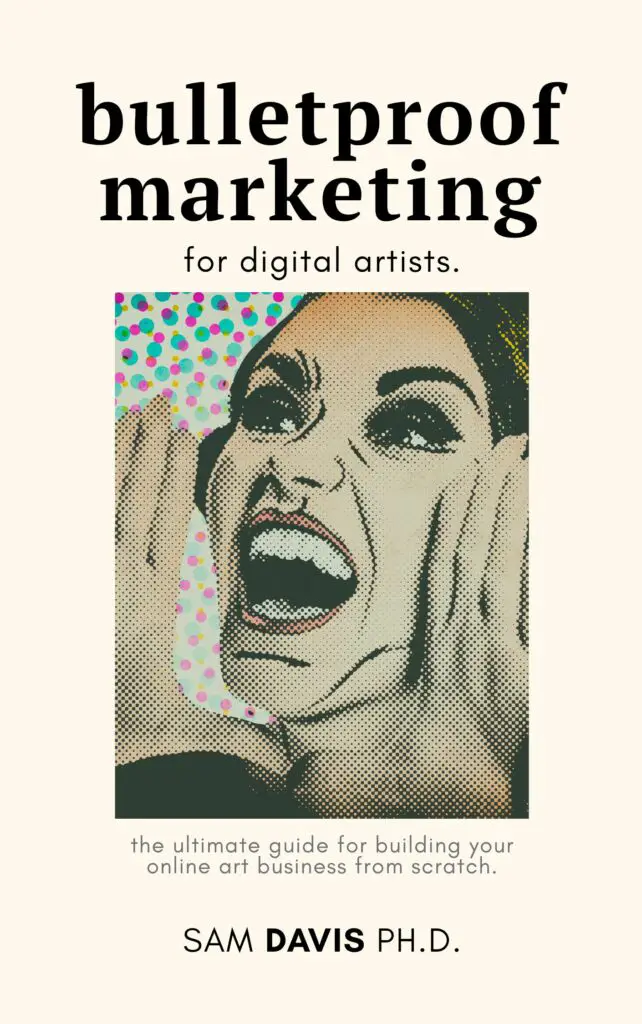If you're interested in learning how to draw, there are some basics that every artist needs to know. In this blog post, we'll cover the essential skills and techniques that will help you get started. Whether you're a beginner or an experienced artist, these tips will help you improve your drawing skills.
Maybe you want to create art, or maybe you just need to be able to communicate better through sketches. Whatever your reason, learning the basics is essential. In this blog post, we will discuss the basics of drawing and provide some tips that will help you get started!

The very basics of drawing: tools and techniques
We generally recommend that artists use online drawing classes like those offered by Skillshare to learn how to draw at your own pace. While it might take you a while to develop your own art style, an online art class is a great way to master the drawing process. This applies whether you're looking to do cartoon drawing, perspective drawing, the human figure, or even technical drawing. An online class is going to set you up for success with drawing fundamentals.
Below, I'm including some sample information about pencils, paper, and drawing styles so that you can understand just how detailed illustration courses can get. Online drawing classes provide a wealth of information. Even though I'm a working artist, I still use an online drawing class a few times a year to improve my drawing techniques without ever needing to leave my home. While I'm mostly involved in drawing animals, an online drawing class helps me expand my skills and improve my ultimate drawing prowess. Alright, enough of my babbling – let's review the very basics of drawing for you!
The different types of pencils and how to choose the right one
When choosing a pencil, it is essential to consider the purpose you are using the pencil for. Are you an artist looking for superior control and ease of use? If so, then a traditional wooden pencil with its wide range of available grade leads will be an excellent choice. For graphic arts projects where precision is needed, mechanical pencils with their thin lead option are the ideal tool. No matter what your specific need, with all the varieties of pencils available today, there will be one type that meets your requirements perfectly.
The different types of paper and how to choose the right one
When choosing paper for a particular project, it's important to be aware of the various types that are available to you. You can choose between bond and cover paper and between uncoated, coated, or textured finishes—each with its own specific properties. Bond is thinner and stronger than cover, while uncoated paper is best for writing on using pencils or other light-duty materials. Coated paper is much smoother and offers better print quality, while textured paper gives a creative look that customers love. To make the right choice, it's important to consider your budget and how you will use the paper so that you can select the most cost-effective, suitable option for your needs.
The different types of erasers and how to use them
Erasers come in a variety of shapes, sizes, and styles, allowing you to choose the perfect one for any job. Kneaded erasers work especially well for creating shadows and highlights when sketching or shading. Vinyl erasers are excellent at picking up large amounts of graphite or charcoal and can erase even the faintest lines. For precision work, art gum erasers allowed you to easily remove small amounts of material without damaging the paper. Not all erasers are created equal though – Sakura pen-shaped eraser tips are perfect for making detailed corrections on small drawings and intricate calligraphy pieces. No matter what kind of eraser you decide to use, it's important to remember that their purpose is primarily removing marks from paper – carefully!
How to hold a pencil correctly for artists
As an artist, pencil grip technique is one of the first and most important skills to master. To hold a pencil correctly, you want to grip the pencil with your thumb and index finger lightly. Rest your middle, ring and pinky fingers on the page for support. Rinse and repeat this exercise until you feel comfortable and find the correct pressure for drawing. Remember that comfort is key – your hand should not experience any tension or strain but instead move freely when sketching. Furthermore, try to keep your wrist up in a stationary position as opposed to angling it downwards as this can lead to fatigue over time. Once you’ve mastered the basics of how to hold a pencil correctly, with practice will come increased control, precision and accuracy in all your future artworks!
How to make basic strokes with a pencil
To produce a basic stroke when drawing with a pencil, it's important to understand the basics of pressure, shape and direction. Whether you are aiming for light or dark lines, it is essential to use consistent pressure on your pencil – starting off lightly and increasing the pressure depending on how dark you want the line. Additionally, modifying the angle or curvature of the pencil in combination with different amounts of pressure also affect the final result. Different shapes such as circles or arcs can also be made by manipulating where you start and stop while making a single stroke. Finally, changing the direction of the pencil movement will change how a sketch appears; everything from casual to more intentional strokes can create an effect that best suits your artwork.
How to create shading with a pencil
To create shading with a pencil, it is important to use the right kind of pencil and technique. Graphite pencils generally range from 6B to 8H – the lower numbers offer softer graphite which is ideal for shading. Starting with the lightest shade and working your way up to the darker shades can produce beautiful results. Blending your shades together makes realistic shadows and depth. It often helps to tilt your pencil at an angle while shading, allowing your hand motion to go in either a circular or zigzag pattern. Layering several strokes on top of each other can also help darken shades and make them more even. Mastering these techniques takes practice but you'll be able to create incredible drawings with patience and exploration.
Choosing the right materials is only part of the battle when it comes to learning how to draw with a pencil. The way you hold and use your pencil can also make a big difference in the quality of your drawings. In this blog post, we’ve covered some of the basics of choosing and using pencils, paper, and erasers for drawing. We’ve also gone over how to hold a pencil correctly and how to make basic strokes with a pencil. Finally, we showed you how to create shading with a pencil. By following these tips, you should be well on your way to creating beautiful works of art with just a simple pencil.
Where to find a deeper understanding of drawing
It took nearly a thousand words just to describe the basic tools used for drawing. Taking a drawing class online is a much smoother way of learning concrete art skills like:
- Figure drawing
- Digital Art
- Developing your own art style
- Life drawing
- Colored pencil drawing
- Drawing animals
- and more…
With a service like Skillshare, you're going to get lifetime access to classes for beginners and and experts alike. If you don't know where to go from basic line drawings, a service like Skillshare's online drawing classescan help you develop the building blocks for success. Every online drawing course is high quality, reviewed by their educational experts. Even if you're just looking to brush up on your Adobe Illustrator skills, online drawing classes are a great investment for your future.
While you can learn some drawing skills on YouTube, the drawing exercises found on Skillshare are next to none. Don't believe me? Sign up for your free trial and get access to all the art lessons you can digest before having to pay a dime towards drawing lessons.
See the online drawing classes available and get your free trial today.
Drawing and graphic design are fundamental to a successful sticker business. So if you need to learn how to draw, the time is now. Have questions? Leave them in the comments below!

